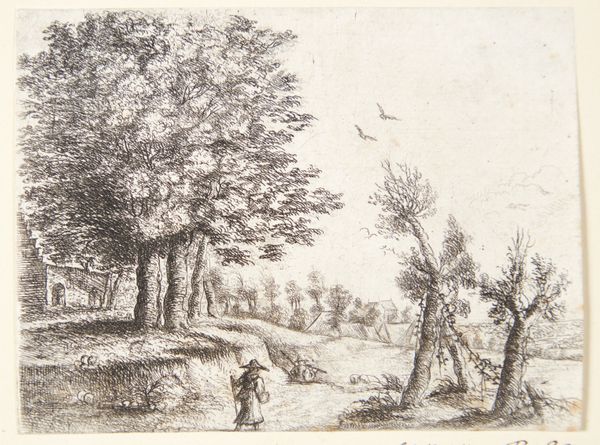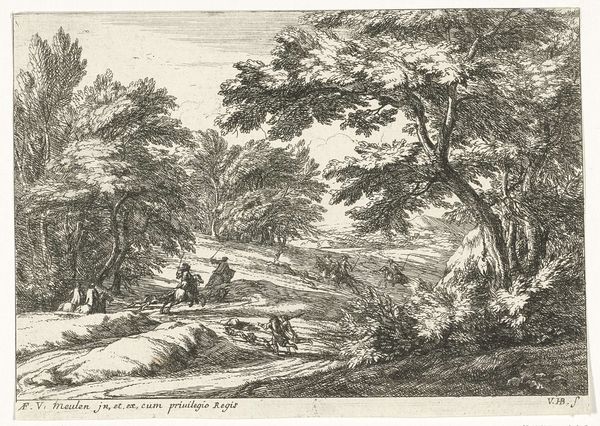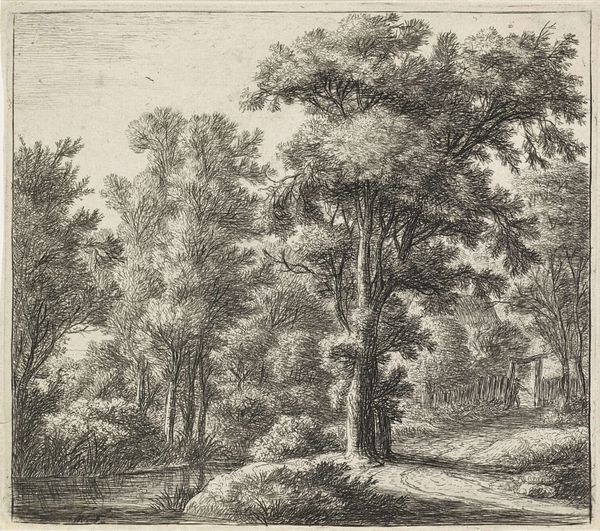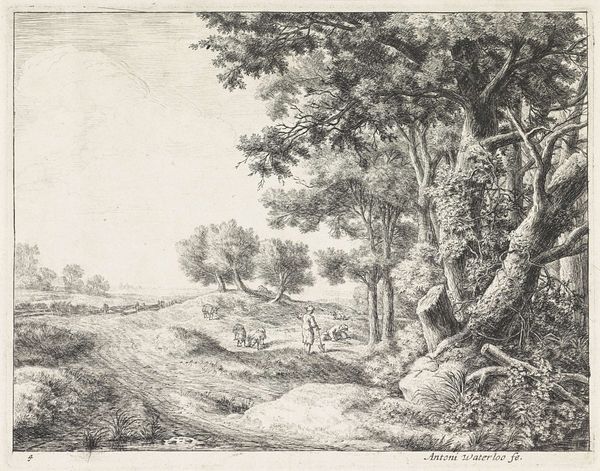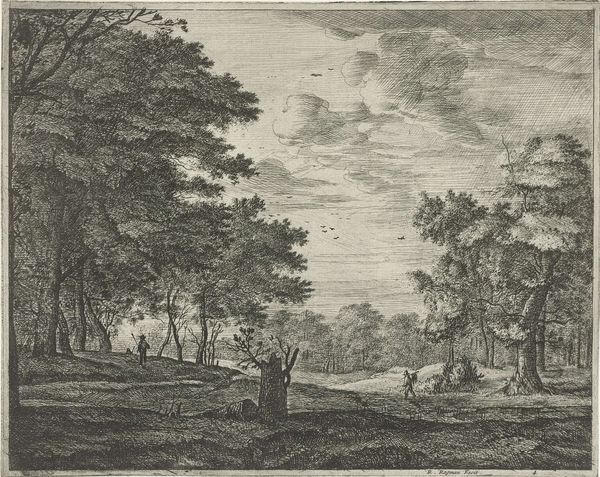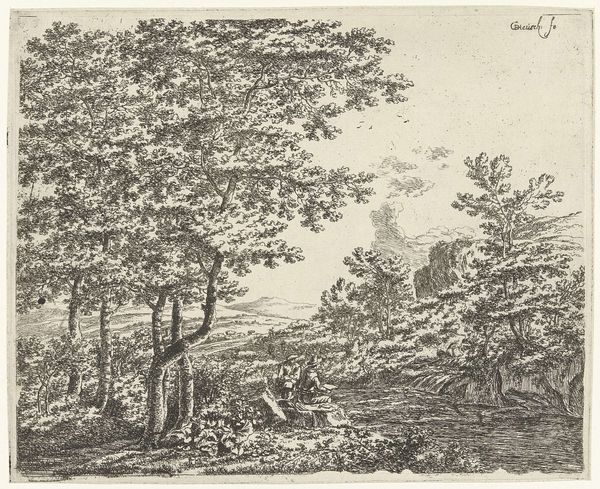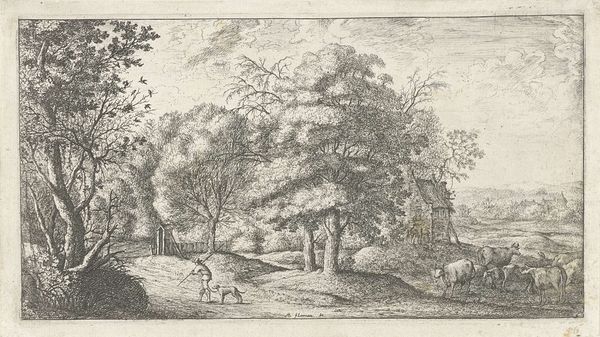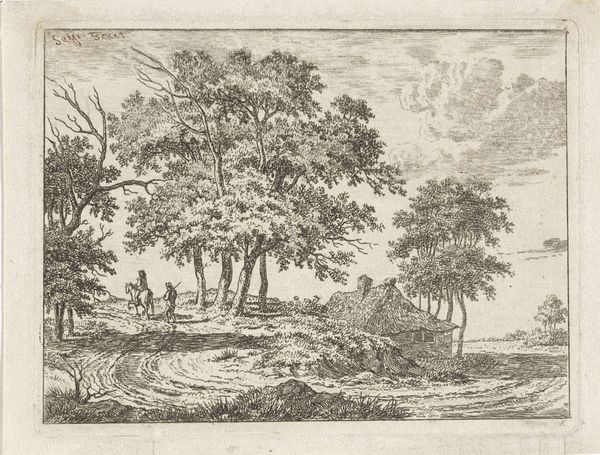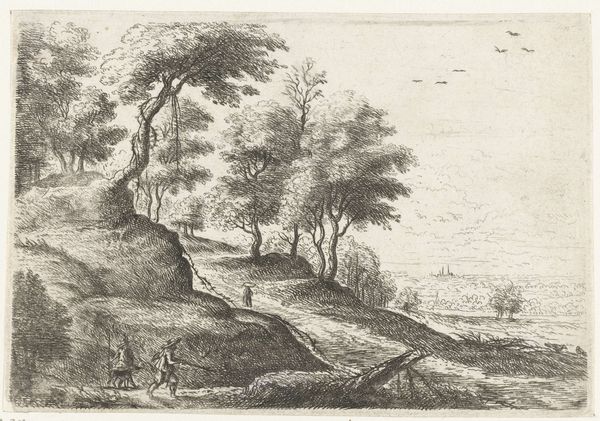
Landschap met een vrouw en een fluitspelende herder 1637 - 1679
0:00
0:00
philipsaugustijnimmenraet
Rijksmuseum
drawing, ink, pencil, pen
#
drawing
#
dutch-golden-age
#
pen sketch
#
pencil sketch
#
landscape
#
ink
#
pencil
#
pen
Dimensions: height 80 mm, width 109 mm
Copyright: Rijks Museum: Open Domain
Philips Augustijn Immenraet created this landscape with a woman and a flute-playing shepherd in the 17th century using etching. Etching involves coating a metal plate with a waxy, acid-resistant substance, then scratching an image into the wax. When acid is applied, it bites into the exposed metal, creating lines that hold ink. The plate is then printed onto paper. Here, we can see the dense cross-hatching which communicates tone and shadow, a hallmark of the etching process. The very character of the image, its delicate lines and subtle gradations, are directly connected to the way it was made. There's a sense of labor, skill, and patience involved in creating this landscape. The final image is a testament to both Immenraet's artistic vision and the meticulous process of etching, a reminder that art is not just about the image, but also about the means of its making.
Comments
No comments
Be the first to comment and join the conversation on the ultimate creative platform.
